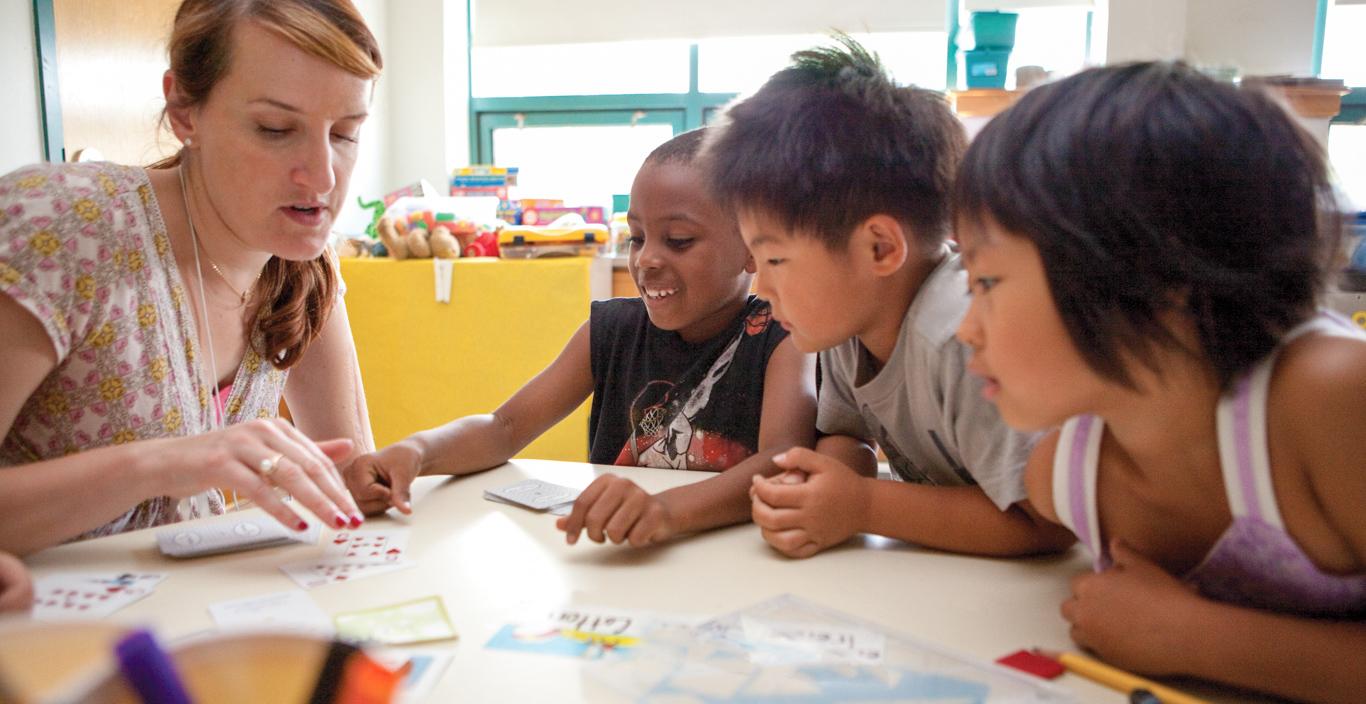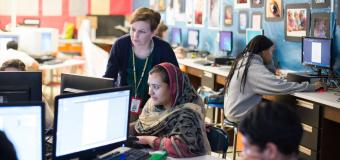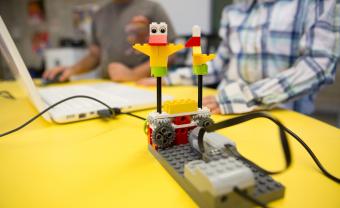When Sarah Fincke decided to go back to school to become a teacher, she went way back…to her high school.
Fincke, a graduate of Berwick Academy in Maine, returned to her alma mater as a teaching apprentice through Lesley’s collaborative teacher training. The program, more than four decades old, immerses would-be elementary, middle and high school teachers in a school during their one-year master’s program.
“I can’t imagine not having done a program like this and just doing the degree work and going into my own classroom,” said Fincke, who graduated from Lesley’s Collaborative Internship Program 2017 and now teaches in Connecticut. “The program was an exciting and stimulating opportunity to work alongside seasoned teaching professionals and develop my passion for working with adolescents. Having the opportunity to experience all facets of school life - teaching, coaching and advising - prepared me well for a career in teaching."
Despite Lesley’s long history with teacher residencies, the majority of such programs are quite new, and only around 50 teacher residency programs exist in the United States, according to the Learning Policy Institute.
While there is not much data on residencies, research does demonstrate that graduates of such programs tend to stay in their roles longer than other novice teachers, and that their students perform better on standardized tests.
“They stay because they’ve had such a strong foundation,” says Margaret Szegvari, director of teacher training at Pike School, one of Lesley's partner schools.
Hands-on learning
Teaching programs traditionally include short internships, but our residencies offer something more for apprentice teachers: immediate classroom participation combined with courses taught by teachers on site and on campus at Lesley. (Read more about Teacher Residency options.)
Our teacher residency, modeled on the medical residency system, recognizes that pre-service teachers learn best when they are immersed in the day-to-day life of a school, observing and learning from master teachers, and working with students directly. Residents assume more responsibility for classroom life over the course of the school year, moving from working one-on-one with students to small groups, from small group lessons to whole class lessons, from a single day to a month-long unit of study.
Students in the Collaborative Internship Program either spend an entire school year in a single classroom or several years within one of our 11 school and district partner sites and pursue a master’s degree concurrently.
“What is unique about our partnership is the mutual trust between Lesley and the participating schools,” says Language and Literacy Professor Mary Ann Cappiello, director of the Collaborative Internship Program. “Rather than separate the graduate course work and the school-based residency, Lesley’s program is integrated. We trust our partners.”
Historic partnerships
Lesley welcomed its first class in 1971 when we partnered with Shady Hill School in Cambridge, followed soon after by a partnership with Buckingham Browne & Nichols School.
After decades using this model, other universities are beginning to follow our lead.
“Residencies are hot, and we’ve been doing it for forty-something years,” says Cappiello.
The Collaborative Internship Program is foundational to raising up qualified teachers, says Desiree Ivey, executive director of Teacher Training at Shady Hill School.
“Our mantra is ‘learn to teach by teaching,’” says Ivey. “We are merging theory with practice every day.”
She explains, that teachers in training “need to see what good teaching looks like.”
The collaborative partners accept a diverse pool of apprentice teachers each year, who come from across the country to participate. Apprentices are matched with mentor teachers who evaluate their progress as they take on more responsibility during the year. Those same teachers facilitate the graduate-level courses taught on site.



